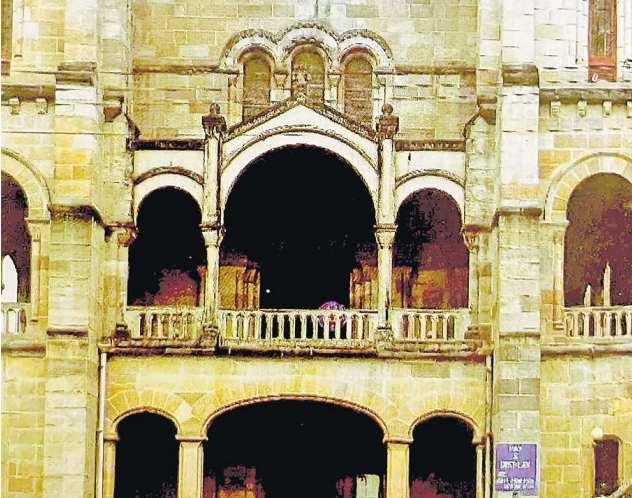BY the mid-1980s, Fiji was still reeling from natural disasters and quietly shifting beneath the surface of political change.
Yet in homes, villages, and parish halls, the daily struggles of faith, culture and resilience revealed themselves in quiet but powerful ways.
Columban priest Fr Frank Hoare, often at the intersection of Indo-Fijian and Fijian lives, found his ministry tested not only by cyclones and hardship, but also by dilemmas of trust, dignity, and the fragile threads that hold relationships together.
Last week, we saw how faith caught fire, sometimes literally, in weddings and family dramas, and how a schoolgirl used tradition itself to reclaim her freedom. This week, we turn to 1984 and 1985, where storms tore through homes, a convert wrestled with faith and worship, and one woman’s loyalty shone through a lifetime of difficulty.
A convert’s conviction
In 1954, young Kashi Ram was among the first students accepted into Xavier College, Ba. Raised in a devout Hindu family in Moto, he was drawn not only to studies but to the daily scripture classes led by Columban priests.
The Sermon on the Mount spoke to him with particular force: “Love your enemies… Turn the other cheek.” Inspired, he asked his father for permission to become Catholic. At Xavier, Fr Jim Gavigan baptized him Francis.
Years later, as an active member of St Joseph the Worker Parish in Tamavua, Francis was leading an RCIA session for non-Christians preparing for baptism when devotional hymns to Mary began echoing from the Cathedral above.
Francis suggested joining the prayers. Fr Frank resisted, insisting they should finish their teaching first.
“Francis admitted later that he was very annoyed with me,” Fr Hoare recalled.
“But when he thought about it, he realised that explaining the Gospel message is even more important than singing hymns.”
Storms of 1985
On January 17, 1985, Hurricane Eric battered Fiji with winds up to 150 miles per hour. Just two days later, Hurricane Nigel tore a similar path. More than 30 people died; homes and crops worth millions of dollars were destroyed.
Visiting Saweni settlement near Lautoka, Fr Hoare found devastation among three Hindu brothers and their families. Only a small kitchen still stood.
One brother, Kannan, recounted the night of terror: doors blown open, a roof ripped off, walls collapsing on the family as they huddled under a bed. In desperation, they placed their baby in a tin case for protection, only to pull the child out again as water seeped in.
Finally, in the lashing rain, Kannan led his family out through the storm, moving children one by one with the aid of lightning and a neighbour’s torch until they reached shelter. Then, in the middle of the night, he went back into the chaos to check on his brothers.
“It was an extraordinary act of courage in the face of destruction,” Fr Hoare said.
The dilemma of aid
In the aftermath, Columban benefactors provided money for rebuilding. Catholic prayer groups were given funds on condition they worked cooperatively to repair the worst-hit homes.
But with a little left over, Fr Hoare faced a moral struggle: should he extend help to his Hindu friends in Saweni?
“I enjoyed our friendly contact over the years. I relished celebrating Hindu festivals with them.
“There were real possibilities for dialogue.”
Yet he feared aid might turn friendship into dependency. In the end, he took the risk, helping Kannan, Bal Krishna, and their neighbour Johnny purchase building materials.
“They were very happy and began to look again with hope to the future.
“And I was impressed that Hari Krishna, who had more resources, did not come for help.”
Whether the deeper dialogue he longed for would blossom, time alone could tell.
Miriam’s loyalty
Not all storms were of nature’s making. In March 1985, Fr Hoare visited Miriam, a gentle woman married to Raju, a man whose harshness shadowed their household.
She quietly revealed the reality of her life: locked in the house when Raju left town, barred from visiting family, and once threatened as he sharpened his cane knife.
“I was so scared I couldn’t sleep all night.”
Yet in later years, when illness made Raju weak and dependent, Miriam did not abandon him. She fed him daily in hospital, buried him from the church, and observed every cultural rite.
Even after his death, her fidelity endured.
“I go to the graveyard every day to pray for Raju.”
Lessons in fragility and fidelity
From a student turned Catholic leader, to families surviving hurricanes, to a woman who embodied faithfulness in suffering, these stories of 1984-1985 reveal both the fragility and resilience of human life.
“Faith,” Fr Hoare reflected, “is tested in the ordinary and the extraordinary, whether in the storm’s violence, or in the silence of a locked room.”



